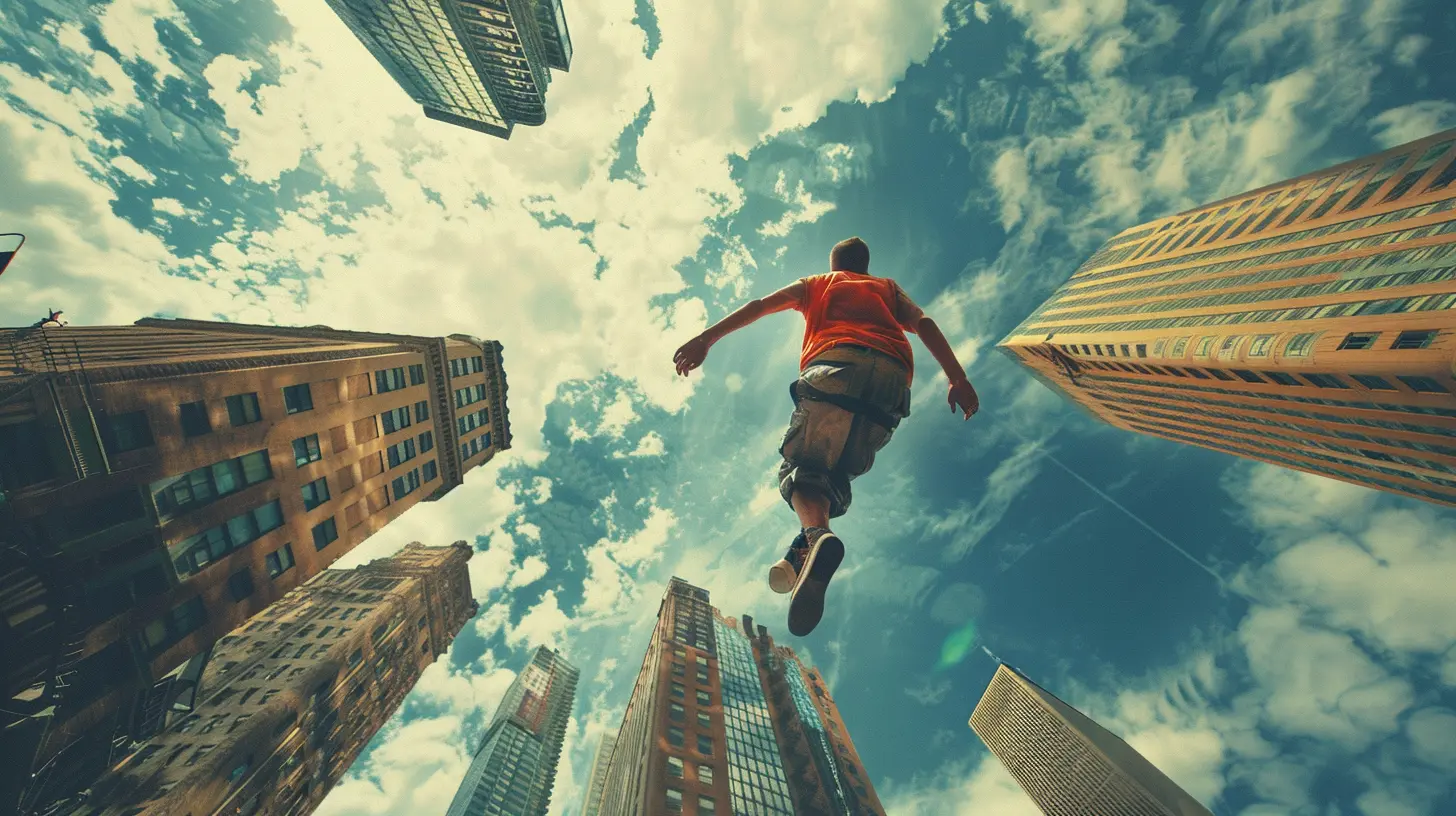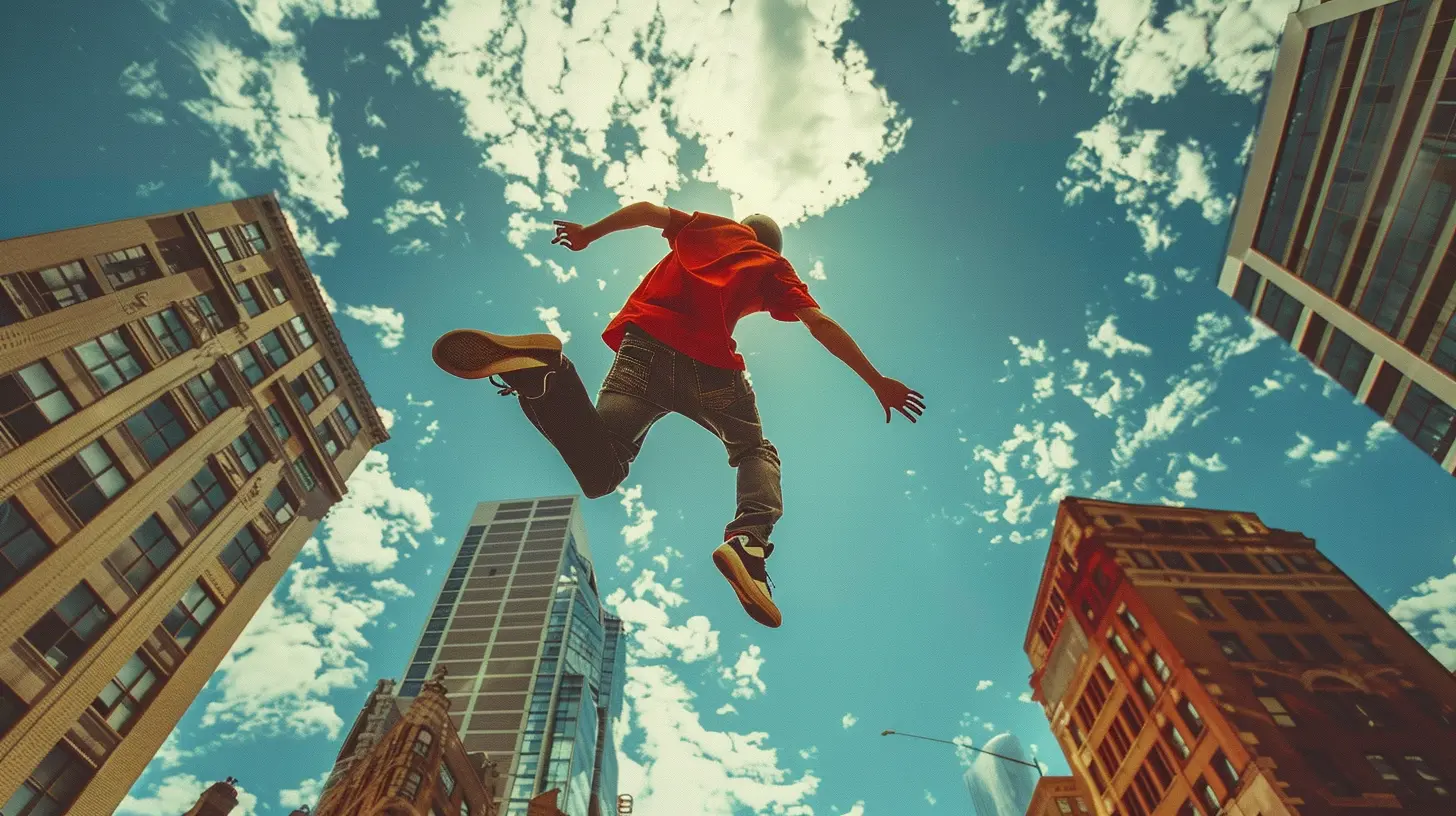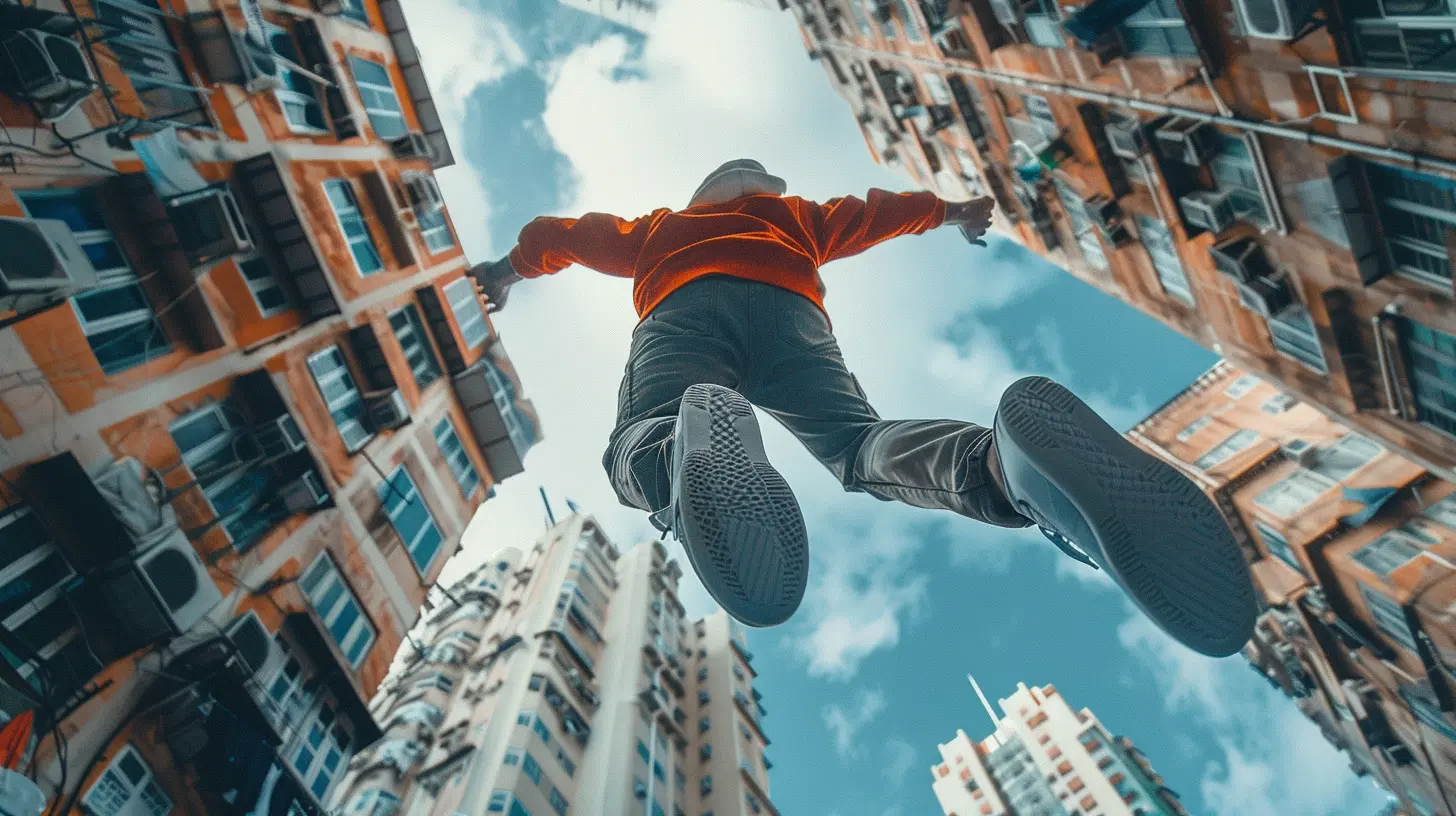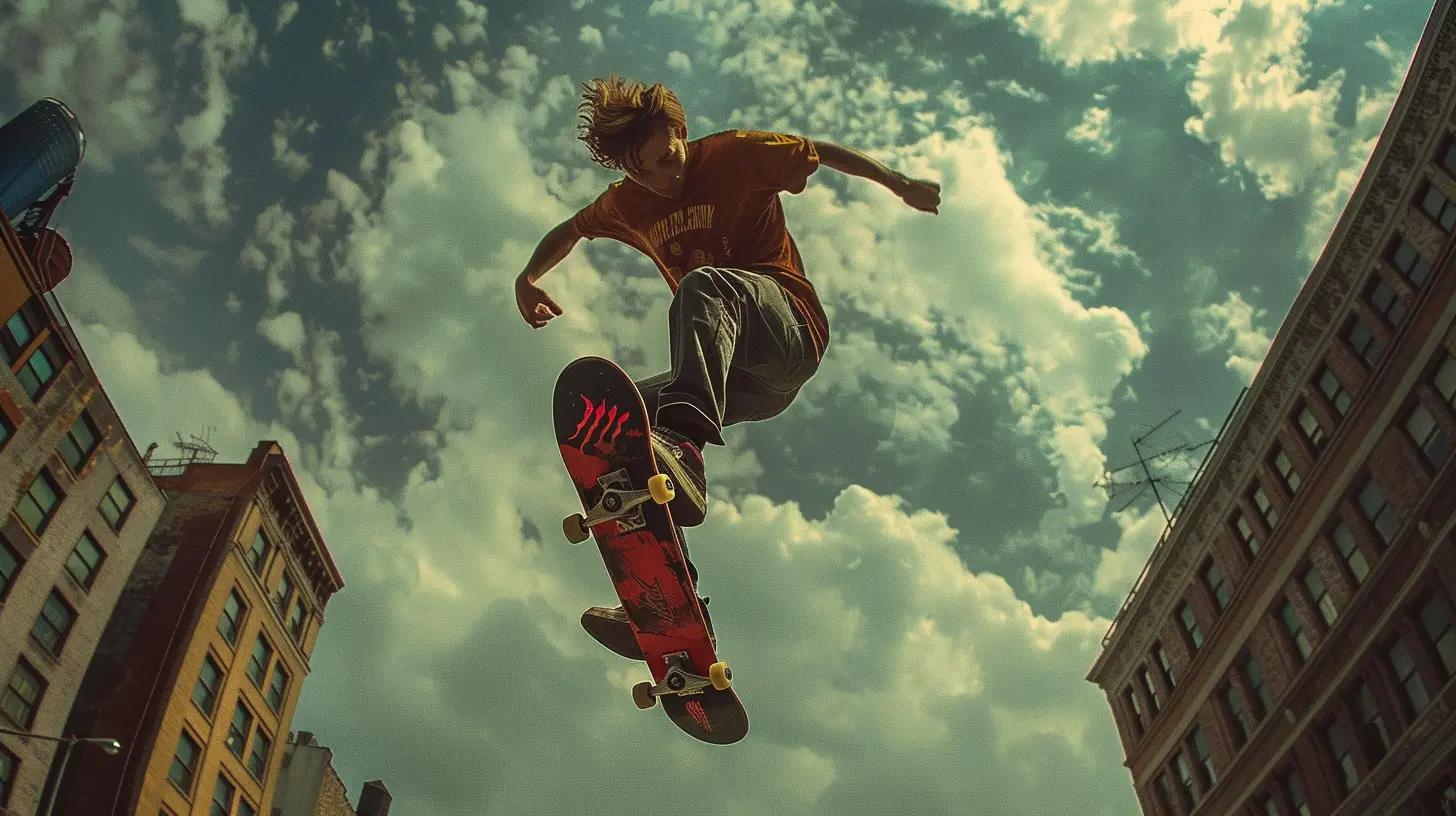Urban Freerunning: Turning City Streets into a Playground
13 July 2025
Have you ever looked at a cityscape and thought, “Wow, this place is just one big obstacle course”? No? Well, for freerunners, that’s exactly what it is. Welcome to the wild and daring world of urban freerunning, where skyscrapers, railings, staircases, and even trash cans transform into tools of movement and creativity.
Urban freerunning isn't just a sport—it's a lifestyle, an art form, and for many, a way to reclaim and repurpose the urban sprawl. Let's take a dive into what makes this gravity-defying activity so electrifying.
What Is Urban Freerunning?
Urban freerunning is a physical discipline that combines elements of parkour, gymnastics, and street acrobatics. But the twist? It’s not just about efficiency of movement; it’s about style, self-expression, and flowing through the city like it's your own personal jungle gym.Picture this: you're leaping between rooftops, vaulting over rails, flipping off ledges—all while making it look effortless and cool. That's the freerunner’s life.
Unlike traditional parkour—which focuses on getting from one point to another as quickly as possible—freerunning adds flair. Think flips, spins, and expressive movements that prioritize aesthetics alongside utility.
A Brief History of Freerunning
Let’s rewind a little.Urban freerunning evolved from parkour, which has its roots in France. David Belle, often considered the father of parkour, drew inspiration from military obstacle course training in the late 1980s. From there, it blossomed into a discipline focused on navigating physical spaces swiftly and efficiently.
But then came Sébastien Foucan, a co-founder of parkour who wanted to inject a bit more soul into it. He coined the term “freerunning” around the early 2000s. His idea was to go beyond just practical movement—to explore personal expression and emotional flow in motion.
From there, freerunning took on a life of its own, becoming a global movement that now has leagues, competitions, online communities, and even a spot in pop culture (remember those jaw-dropping chase scenes in movies and video games? That’s freerunning in action).
The Urban Oasis: Why Cities Are Perfect for Freerunning
At first glance, a city might seem like a concrete jungle—cold, harsh, and rigid. But for freerunners, it’s a playground waiting to be explored.Here’s why cities are the ultimate backdrop:
1. Endless Obstacles
Benches, rails, stairs, walls, fences—you name it. To a freerunner, every corner of the city offers a challenge to conquer or a stage to perform on.2. Creative Freedom
Cities are unique. No two buildings are identical, and that variability allows freerunners to get creative with their tricks and flows. One day, you’re scaling a stairwell; the next, you're flipping over sculptures or rolling across rooftops.3. Community Vibe
Cities tend to have thriving freerunning communities. People meet up, train together, push each other, and share the stoke. The camaraderie is real, and it’s one of the best parts of the sport.
Getting Started with Urban Freerunning
Now, you might be thinking, “That sounds awesome, but how do I even start?”Good question. Freerunning might look intimidating, but everyone starts somewhere—and you don’t need to be an Olympic gymnast to get going.
1. Master the Basics
Before you start flipping off walls, get the fundamentals down. Basic movements like:- Precision jumps: Jumping from one point to another with control.
- Vaults: Getting over obstacles smoothly.
- Rolls: Absorbing impact after a jump by rolling across your shoulder.
- Climb-ups: Scaling walls or ledges.
Start practicing in a controlled environment like a gym or training facility if possible. Once you're confident, you can take it to the streets.
2. Safety First, Always
Freerunning is thrilling, but it comes with risks. Here are some essential safety tips:- Warm up properly.
- Wear proper sneakers (with good grip).
- Know your limits.
- Train with someone experienced.
- Check your surroundings—loose rails and sketchy surfaces are common hazards.
Remember, it’s cooler to walk away and live to jump another day than to push yourself into injury.
3. Build Your Strength and Conditioning
Freerunning is a full-body workout. Core strength, balance, flexibility, and explosive power are key. Incorporate exercises like:- Pull-ups for upper-body strength
- Squats and lunges for legs
- Planks for core stabilization
- Balance drills
You’ll be amazed how much easier things like wall climbs and precision jumps become.
The Freerunning Mindset
Freerunning isn’t just about what your body can do—it’s also a test of your mind.Urban freerunners develop a unique way of looking at the world. While others see obstacles, freerunners see opportunity. That railing? A chance to vault. That rooftop gap? A leap of courage.
Fear is a constant companion—but overcoming it is part of the game. That’s where the real growth happens. You learn to push your boundaries, trust your instincts, and believe in your abilities.
And you know what? That mindset leaks into everyday life too. Suddenly, problems seem like puzzles, not barriers.
Freerunning vs. Parkour: Clearing the Confusion
Let’s clear the air—freerunning and parkour are related, but they’re not the same.| Feature | Parkour | Freerunning |
|---------------------|--------------------------------------|--------------------------------------|
| Main Focus | Efficiency and speed | Self-expression and creativity |
| Origins | Military obstacle courses | Evolved from parkour |
| Common Movements | Wall runs, vaults, precision jumps | Flips, spins, stylistic variations |
| Mental Approach | Functional problem-solving | Artistic and emotional expression |
So, in simple terms, parkour is “point A to point B,” while freerunning is “point A to point B—but with swagger.”
The Role of Social Media in Freerunning’s Explosion
Let’s be real—without platforms like YouTube, Instagram, and TikTok, freerunning might still be underground. But now? It’s gone viral.Watch one clip of a freerunner doing a double backflip between rooftops and you’ll either scream in awe or yell at your screen, “That’s insane!”
Social media has become a stage where freerunners showcase their skills, build personal brands, and inspire the next generation. It also creates a global community to share techniques, tips, and fails (yes, those happen too—just type “freerunning fails” into YouTube).
Urban Legends: Famous Freerunners You Should Know
Want to see what the best of the best can do? Check out:1. Sébastien Foucan
The OG. Co-founder of freerunning and star of Casino Royale (yep, that incredible rooftop chase? That was him).2. Ryan Doyle
A Red Bull athlete who brings martial arts into the mix. His flow is unreal.3. Jason Paul
This guy turns freerunning into visual poetry. Check out his YouTube videos—they’re like action movies.4. Pasha Petkuns
Probably one of the most creative freerunners out there. He combines humor, tricks, and jaw-dropping stunts.These legends continue to push the envelope of what's possible—a reminder that this sport is only limited by your imagination and drive.
The Freerunner’s Code: Respect the Space
Let’s talk ethics for a sec.When you're out freerunning in the city, you're sharing that space with others. So it’s important to:
- Respect private property.
- Avoid causing damage.
- Be mindful of pedestrians and traffic.
- Clean up after yourself.
Freerunning isn’t about rebellion—it’s about creativity, freedom, and respect. Leave every spot better than you found it.
Future of Urban Freerunning
Where’s this high-flying sport headed next?With growing interest, urban freerunning continues to evolve. More competitions are popping up, such as the Red Bull Art of Motion, showcasing elite talent from around the globe. We’re also seeing freerunning influence other areas—like stunt work, video games (Assassin’s Creed, anyone?), and fitness trends.
There’s even talk of it becoming an Olympic event in the near future. The momentum is real, and the freerunning movement is just picking up speed.
Why Freerunning Isn’t Just a Sport—It’s a Way of Life
Urban freerunning isn’t about copying what others do—it’s about discovering what you can do. It teaches you to see the world differently, to overcome fear, and to express yourself without words.You learn resilience, build confidence, and connect with a global community of movers, dreamers, and doers.
So next time you walk through your city, take a second to look around. What looks like a staircase to some could be your next challenge. That wall? A blank canvas for your movement masterpiece.
The city is calling. Are you ready to jump in?
all images in this post were generated using AI tools
Category:
Extreme SportsAuthor:

Onyx Frye
Discussion
rate this article
1 comments
Eliza Fisher
What an exhilarating read! Urban freerunning truly transforms our cityscapes into dynamic playgrounds, showcasing creativity and athleticism. The way athletes navigate urban environments is inspiring and reminds us to see our surroundings in a whole new light. Can’t wait to see more tricks!
July 25, 2025 at 3:28 AM

Onyx Frye
Thank you! I'm glad you enjoyed it. Urban freerunning truly does offer a fresh perspective on our cities. Stay tuned for more exciting content!


